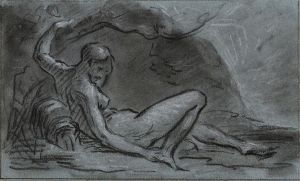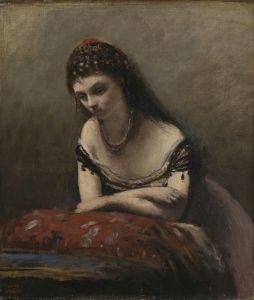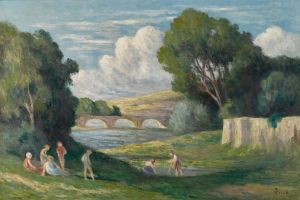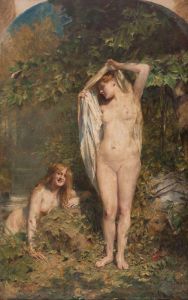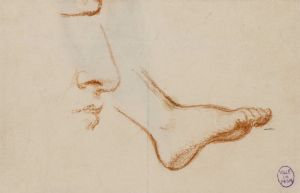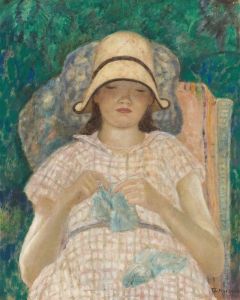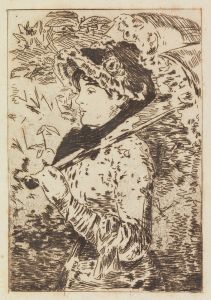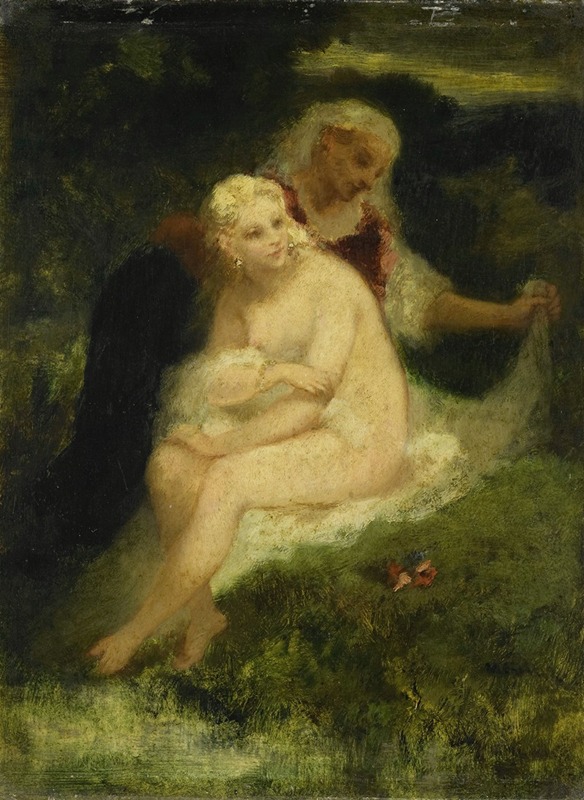
After the Bath
A hand-painted replica of Narcisse-Virgile Diaz de La Peña’s masterpiece After the Bath, meticulously crafted by professional artists to capture the true essence of the original. Each piece is created with museum-quality canvas and rare mineral pigments, carefully painted by experienced artists with delicate brushstrokes and rich, layered colors to perfectly recreate the texture of the original artwork. Unlike machine-printed reproductions, this hand-painted version brings the painting to life, infused with the artist’s emotions and skill in every stroke. Whether for personal collection or home decoration, it instantly elevates the artistic atmosphere of any space.
Narcisse-Virgile Diaz de la Peña (1807–1876) was a French painter associated with the Barbizon School, a group of 19th-century artists known for their focus on natural landscapes and rural scenes. While Diaz de la Peña is best known for his richly colored forest landscapes, he also painted a variety of other subjects, including mythological themes, Orientalist works, and figure studies. One of his notable works in the genre of figure painting is After the Bath.
After the Bath is an oil painting that exemplifies Diaz de la Peña's skill in rendering the human form with a sense of sensuality and grace. The artwork depicts a nude female figure, a common subject in 19th-century European art, particularly in the context of allegorical or mythological themes. The woman is shown in a moment of repose, possibly drying herself or preparing to dress after bathing. The composition emphasizes the soft contours of the body, with warm, glowing tones that highlight Diaz de la Peña's mastery of light and color.
The background of the painting is often rendered in a loose, atmospheric style, which contrasts with the more detailed depiction of the figure. This approach reflects the influence of Romanticism, a movement that celebrated emotion, beauty, and the sublime. Diaz de la Peña's treatment of the subject matter in After the Bath aligns with the 19th-century artistic tradition of exploring the nude as an idealized form, often removed from specific narrative or historical context.
While Diaz de la Peña's landscapes were highly praised during his lifetime, his figure paintings, including works like After the Bath, also garnered attention for their delicate execution and evocative quality. These works demonstrate his versatility as an artist and his ability to capture both the grandeur of nature and the intimacy of the human form.
The exact date of creation for After the Bath is not definitively documented, but it is consistent with Diaz de la Peña's broader body of work, which spans the mid-19th century. The painting is representative of the era's artistic trends and reflects the broader cultural fascination with themes of beauty, nature, and the human body.
Today, After the Bath is recognized as part of Diaz de la Peña's diverse oeuvre, which continues to be studied and appreciated for its contribution to 19th-century French art. The painting is occasionally exhibited in museums or private collections, though specific details about its current location or ownership are not widely available.






